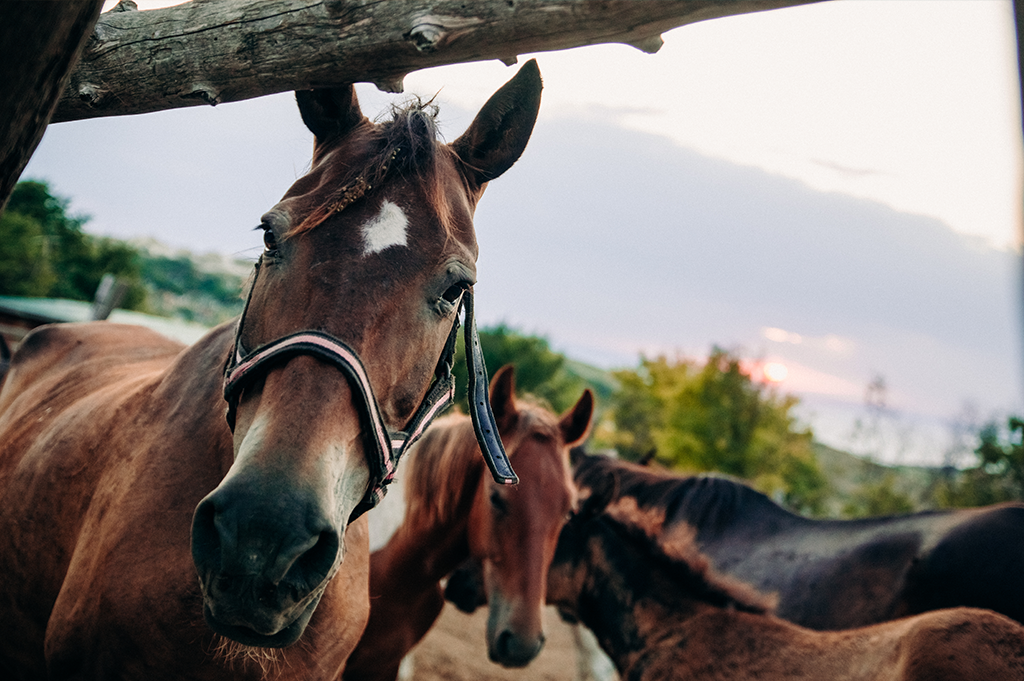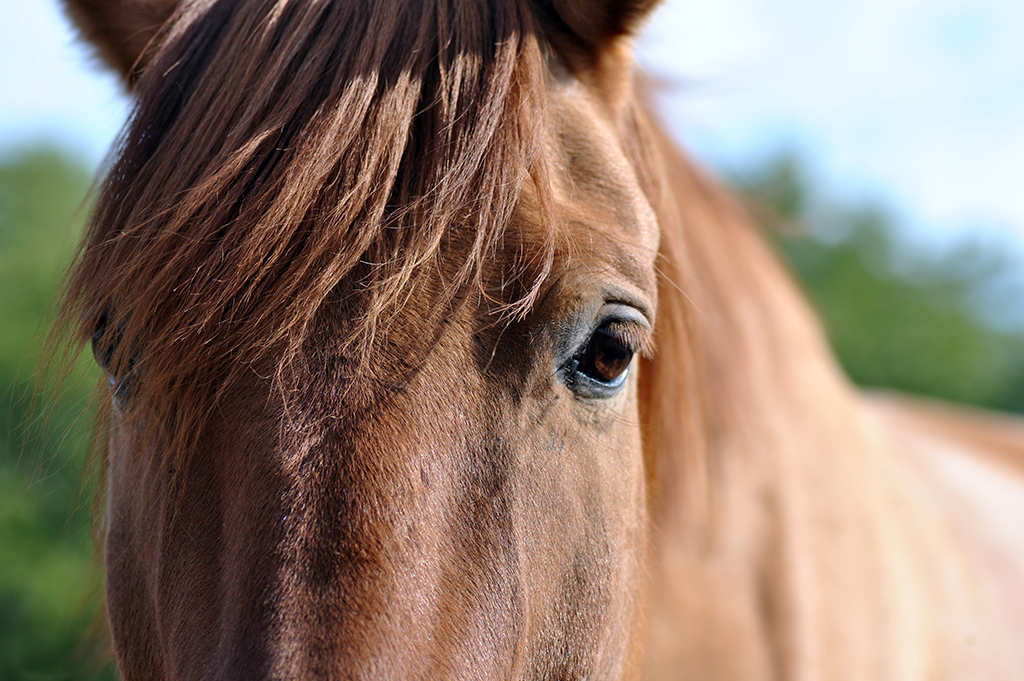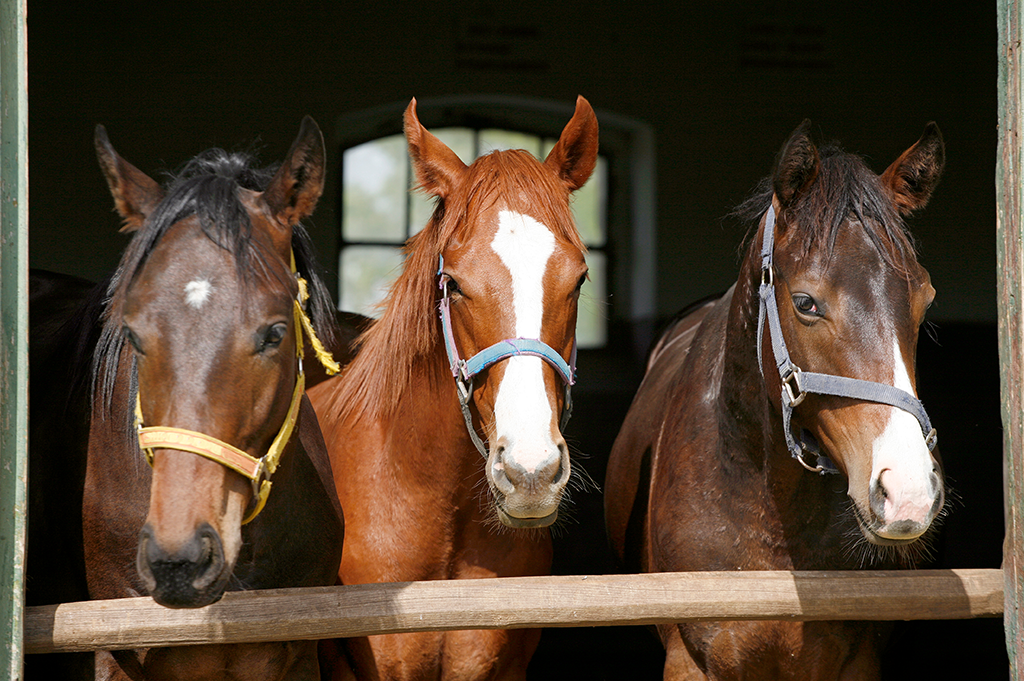Nose bleeds, or epistaxis, are fairly common in horses of all shapes and sizes! However, this doesn’t mean that they can’t appear quite dramatic and cause concern for any horse owner. We recently spoke to our horse health expert to find out more about nose bleeds in horses, how serious they might be, and what every horse owner should know. Read on to find out what they had to say!

What to do when your horse has a nose bleed
While any nose bleed in horses might seem like quite a big deal, the best advice we can give you is not to panic! Most of the time epistaxis is minor and should settle within ten to fifteen minutes, during which, do your best to keep your horse quiet and calm. Don’t try to pack your horse’s nose in order to stop the bleed, as horses are obligate nasal breathers. This means they have to take in air through their nose, so if this is blocked, they will be unable to breathe.
If, after fifteen minutes, the bleeding hasn’t stopped, or if it’s particularly profuse, you should contact your vet immediately. Serious bleeds, that result in a lot of blood loss, can be fatal. You should also speak to your vet if your horse has frequent and recurring nose bleeds, as there may be an underlying cause.

Identifying the cause of nose bleeds in horses
There are various potential causes of nosebleeds in horses, and they can originate from different areas of the body. It’s important to establish whether the bleed is coming from one or both of your horse’s nostrils, as this can help you to identify the source of the problem.
Single or both nostrils?
If your horse is bleeding through both nostrils, this will usually be caused by a bleed within the lower airways. In the event that this occurs after a period of heavy work, it might be the result of exercise-induced pulmonary haemorrhage.
Blood present from just one nostril can be a sign of a bleed from the upper airways, guttural pouches (large pouches within the auditory tubes which connect the ears to the pharynx) or sinuses.
General causes of epistaxis in horses
Horse’s don’t suffer nose bleeds spontaneously, so there will always be an underlying cause. These can include:
- Trauma to the head;
- Nasal foreign bodies;
- Guttural pouch mycosis (fungal infection);
- Exercise induced pulmonary haemorrhage;
- Tumours;
- Sinusitis;
- Ethmoidal haematomas;
- And iatrogenic causes (such as passing a stomach tube).
This list is not exhaustive, and there could be other issues at play that can cause a nose bleed in your horse. It’s important to discover the underlying problem, so that this can receive the appropriate treatment.

Diagnosis and treatment of nose bleeds in horses
Finding the cause of nose bleeds in horses can be a difficult task, and may require further investigation such as x-rays and an endoscopic examination of the guttural pouches. If the bleeding is related to guttural pouch mycosis, it is important that this is identified as early as possible, as the condition can damage major blood vessels and potentially lead to a life-threatening arterial bleed. The treatment of epistaxis will vary depending upon its cause. It could involve medical management, and in some cases, surgery. In the event that your horse has lost a significant amount of blood, they may require hospitalisation in order to see them properly stabilised.
We hope this advice will help you to know exactly what to do if you ever notice a nosebleed in your horse. If you have any questions or are unsure about anything, we recommend speaking to your vet for more information.
As a horse owner, you’ll want to do everything you can to help protect your horse, which is why considering taking out horse insurance could be a good idea. At The Insurance Emporium, we offer Horse Insurance policies with cover for Death, Theft Or Straying as standard. You can then customise your policy with your choice of our optional benefits, such as cover for Vet’s Fees. You could also get up to 30% discount^. Head to our Equine Insurance product pages to find out more!
* Cover for Vet’s Fees up to £5,000 per incident is available on lunar monthly policies where the Optional Benefit has been selected.
^ The 30% discount is made up of 20% Introductory Discount plus 10% Multi-horse Discount (if appropriate). The Introductory Discount is available for the first 12 premium payments on lunar and calendar monthly policies or one premium payment on annual policies.
All content provided on this blog is for informational purposes only. We make no representations as to the accuracy or completeness of any information on this site or found by following any link on this site. We will not be liable for any errors or omissions in this information nor for the availability of this information. We will not be liable for any loss, injury or damage arising from the display or use of this information. This policy is subject to change at any time.


